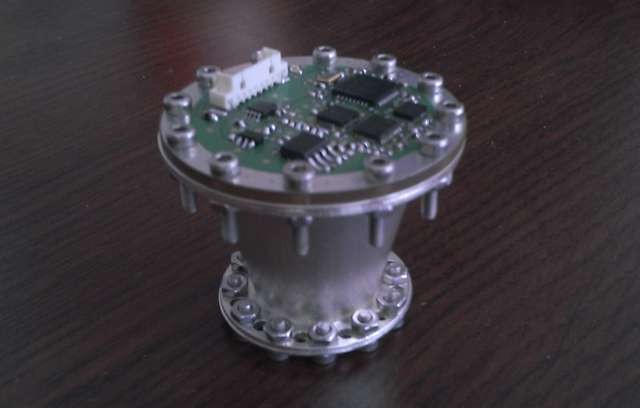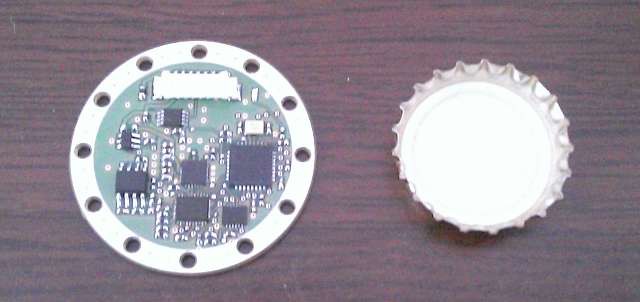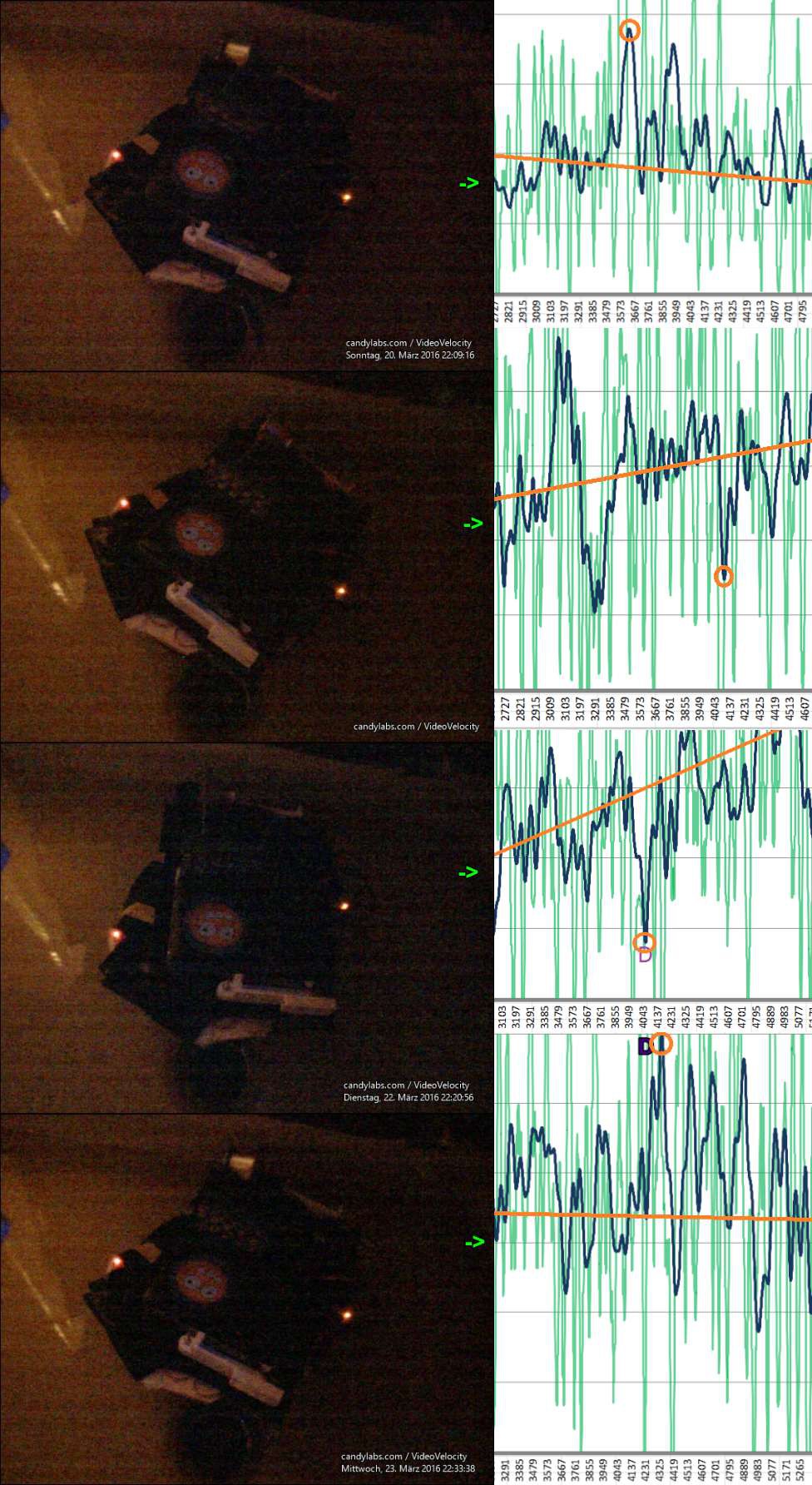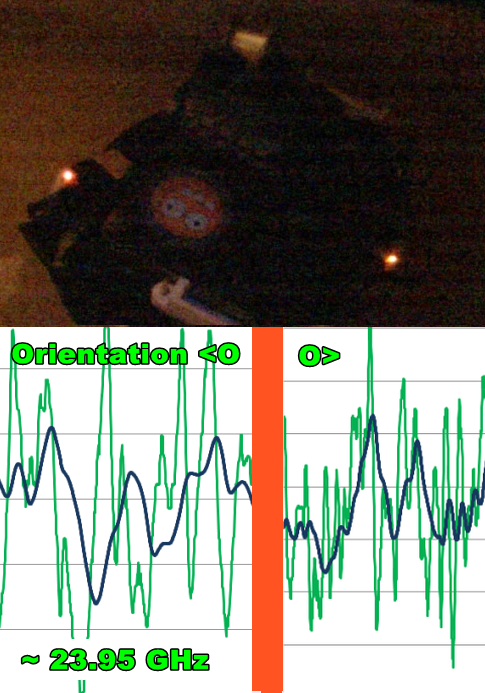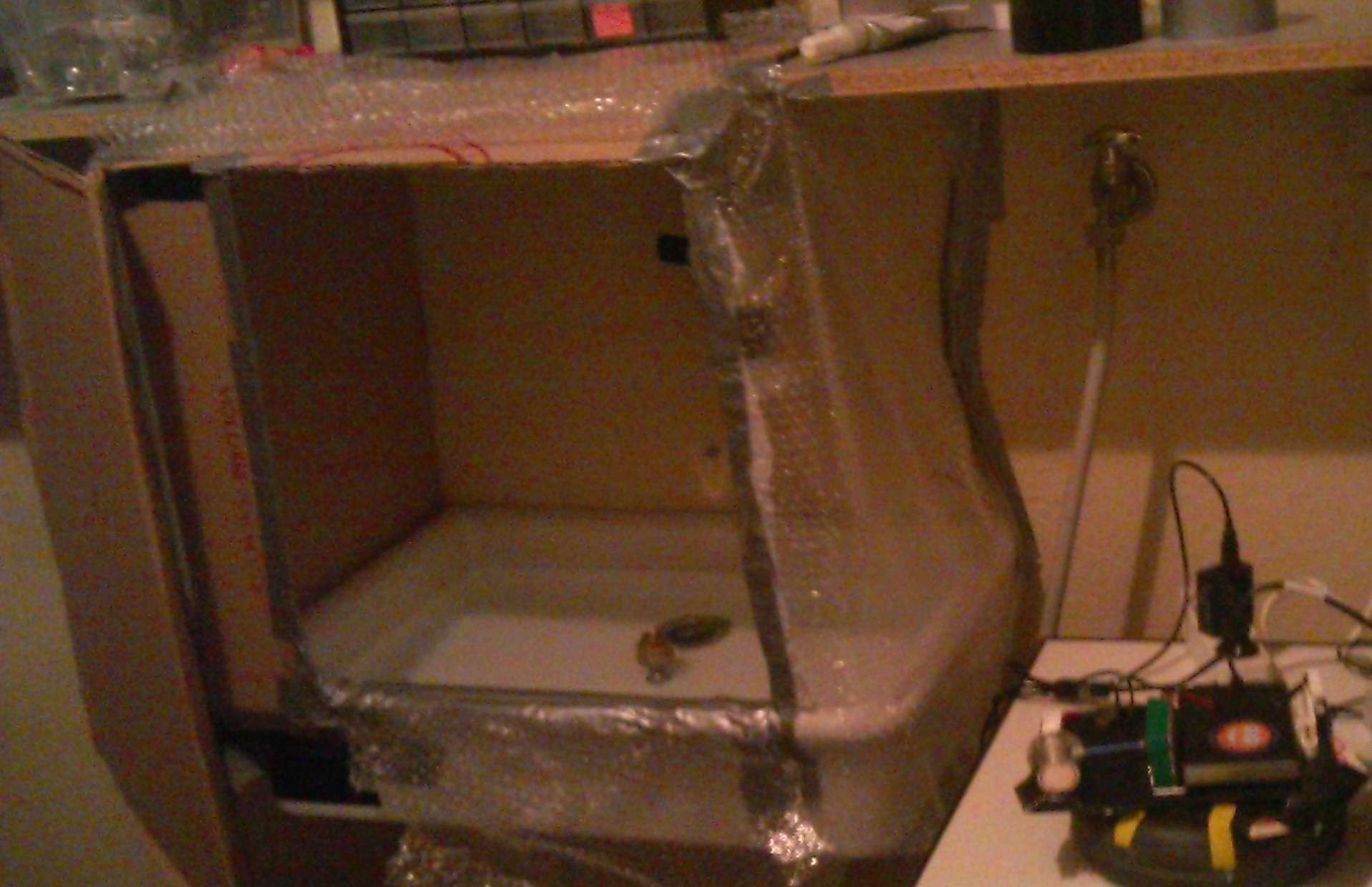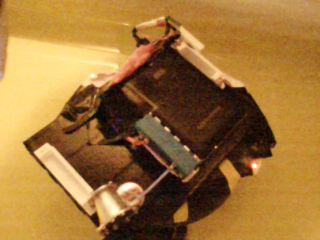-
Cavity measurements with dielectric
04/22/2016 at 19:56 • 6 commentsThe EMDrive V4 got a modification.
I inserted a 3D-printed dielectric on the big end - which showed significant performance boost in another (not my) test on a 900 MHz thruster.
I recorded a 5 values/s sweep from 22.5 GHz to 25.5 GHz without dielectric and I´m just now recording the same sweep wiith the dielectric inside. I will post the data when it´s finished.![]()
![]() Ok, here is the comparison no_dielectric/with dielectric
Ok, here is the comparison no_dielectric/with dielectric
Add. Info: Curve is named "Sensor", it´s arctan(IFQ/IFI), but it´s just the ADC values, so there is an overall characteristic which the curve is not normalized to.
In case you complain about not labeled axes again ;) -
Results V4 available
04/10/2016 at 08:16 • 2 commentsHere is the link to the test data of the EMDrive V4.
Looks still a bit noisy - many peaks occur irregularly, so many of them can´t come from thrust.
There are some repetitive patterns though.
I included a viewer so you can browse in the graph.
Raw ASCII data is also available.The data is colon separated, the format description is included in the repository.
Have fun and please let me know if you spot some thrust.
I will make the new tests longer in hope that the noise can be filtered out better.There is a trackbar with a CALC button beside: You can select the width of the moving average for the graph there.
The radio buttons let you see an overlay of the frequency, power, temperature, phase and PA current over the angle graph.
The red line is a trandline. If you find it useful, the "corr. trendline" checkbox will straigten the trendline on the display. -
Emdrive V4 assembled
04/02/2016 at 13:18 • 0 commentsV4 is ready for testing
![]()
-
Board V4 ready for flashing
04/01/2016 at 16:59 • 5 comments![]()
-
Results #2
03/24/2016 at 07:29 • 0 commentsHere are the latests tests with modified amplifier bias.
The marked peaks occur at about 24050 MHz, near the designed resonance frequency of 24100 MHz.
They show in the predicted direction: Big end leading, turning the platform clockwise/counterclockwise depending on the cavity´s orientation on the platform.
Orange line is the trendline. Temperature changes over several hours of measurements at night are causing a drift - just for better visualization![]()
-
Going 2016HackadayPrize
03/15/2016 at 04:26 • 4 commentsThe EMDrive V4 is in development. It will be a fully integrated module for integration into a PocketQub or Cubesat.
https://hackaday.io/project/10166-emdrive-flight-version
Please take a look at the link and punch the Like-Button: For every like, Hackaday pays 1$ (up to 200$ total per project)
This would cover the BOM cost for the next build :) -
Directional force measured
03/12/2016 at 13:53 • 9 commentsGood news for EMDrive V3: Tests confirm directional force :)
![]()
I got the thermal issue under control and was able to reproduce several tests in both directions of the cavity with corresponding results.
It´s still not a definite proof - but reproducible positive results show at what to take a closer look. The magnifying glass is on the right spot so to speak.
I will run several more tests to be sure these were not only accidental events.The graph shows the angle of the line between the two LEDs on the swimming platform and the video-Y-axis.
The former promising tests were disturbed by thermal issues. There are about 2 Watts of power dissipated into heat by the power amplifier, so during ON/OFF cycles there was a rotation of the platform noticable which is about six times greater than the signal peak shown here.
In the recent tests, I sweep in a small frequency range 23.8-24.2 GHz over seven hours. while keeping the temperature constant.
I will publish the recent results later, so you´ll see that the warm-up phase takes about one hour with a constant shift of the rotation angle - until the platform becomes stable as soon as the temperature has reached its final peak.There is always an oscillation of the platform with very low frequency (one period every few minutes). That´s the reason the tests have to be made so long.
I got rid of 75% of the noise by putting a box around the setup, so now if the peaks you see above will appear in that manner several times more it will look good for the BabyEMdrive. -
Tuning noise away
03/02/2016 at 20:35 • 1 commentAfter a view very clean EMDrive tests the data got very noisy. The platform is oscillating too much.
I blame the weather change - maybe wind is blowing through the basement room and disturbing the setup.
So I quickly duct-taped a box around the sink where the swimming platform is placed.![]()
-
Tests looking good
02/28/2016 at 11:06 • 1 commentTests of EMDrive V3 are looking good. Wrote a piece of code to analyse the data and make an automatic guess of the direction in which the cavity is pointing
(calculating means of the platform displacement angle during ON and OFF phases and comparing them)
Five of five datasets have been guessed correctly by the software.
I´ll continue running the tests.
It´s still to be checked for other side effects though - basic stuff like tests without power, tests with detuned frequency or with cavity pointing downwards - but first I want to collect more data of directional tests.
I can only make one test per night, during daytime the noise is too high.
-
Swimming platform V3
02/24/2016 at 07:19 • 1 commentStarted testing the EMDrive V3 on the swimming platform.
Force is clearly beeing detected - I will perform long duration tests to check for directivity and parasitic effects.
Preliminary information will not be posted - updates will come when complete datasets are available. Datasets will be available for download.![]()
 Paul Kocyla
Paul Kocyla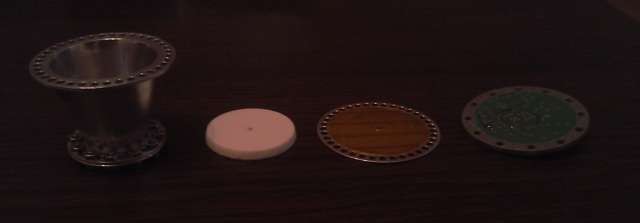
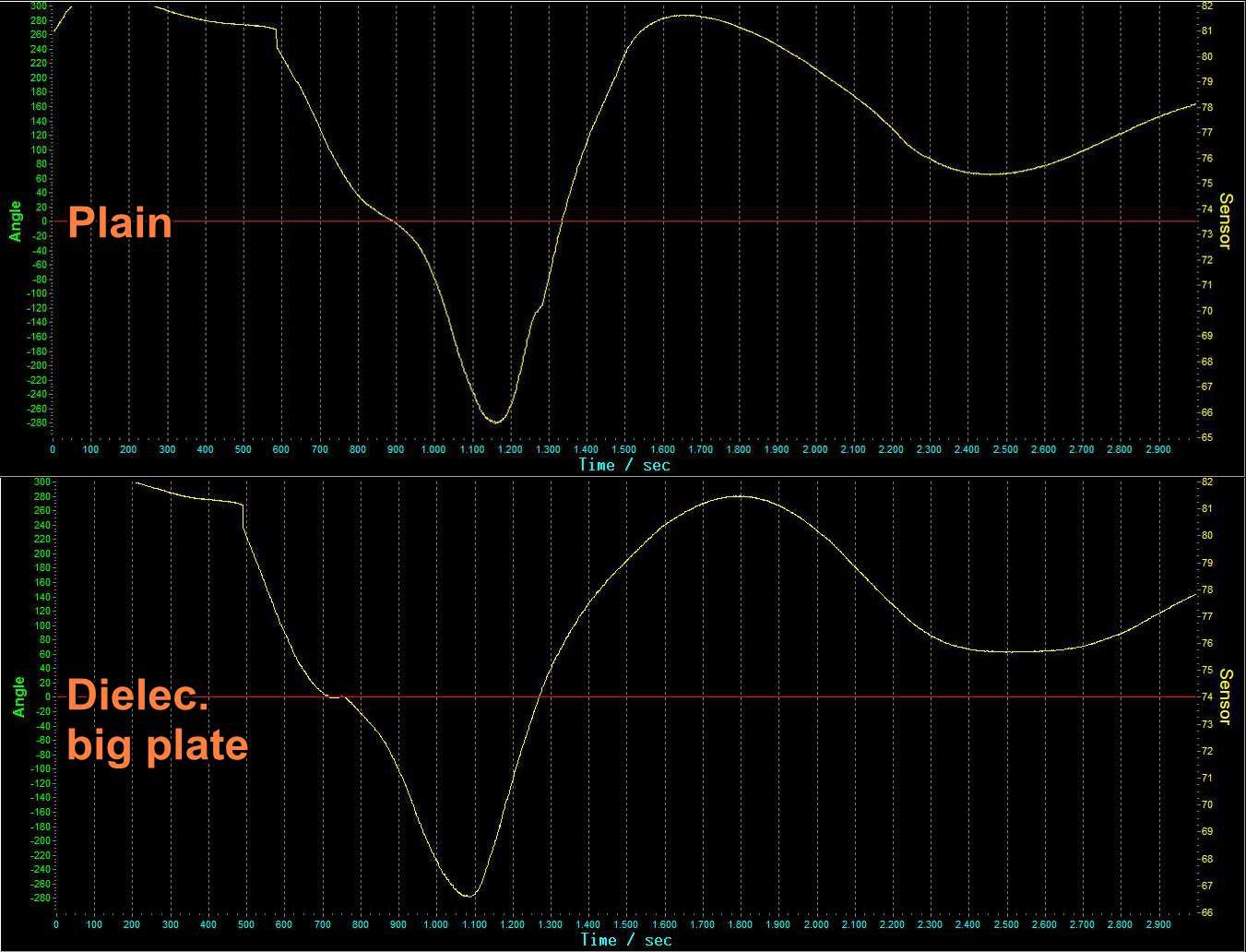 Ok, here is the comparison no_dielectric/with dielectric
Ok, here is the comparison no_dielectric/with dielectric